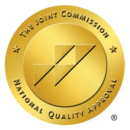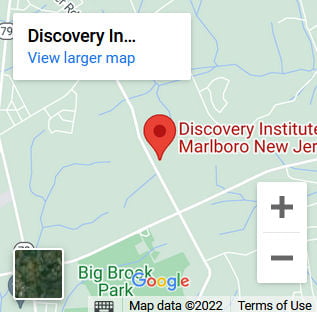Meth Addiction
Meth is an extremely dangerous drug that causes serious detriments to a person’s health. Even if a person uses it once, meth use can lead to meth addiction. This problem can cause irreversible damage. Also, it is rare that someone would be able to use it only once because of its addictive qualities.
We at the Discovery Institute want you to be well-educated on the dangers of a meth addiction, and regarding the nature of addiction as a whole. We believe recovery can begin once the problem is properly understood. That being said, in the piece below we will attempt to give a good idea of what meth is, how it is dangerous, what other contributors to addiction are, and a few ways you can cope. If you are someone who struggles with a meth addiction, please do not hesitate. It is never too late to get help.
What Is Meth?
Meth is a highly addictive drug that can be smoked, snorted, injected, or taken orally. Symptoms of use can include an increase in alertness that borders on hyperactivity, less need for sleep, and unfocused eyes.
Meth interacts with the brain’s production of dopamine. Whenever individuals use meth, they get a surge of dopamine. This leads to a prolonged sense of euphoria and extreme rush. The rush is fairly quick; however, the high lasts for a long time. It is usually 6-12 hours. There are a number of reasons that lead individuals to use meth, but a meth addiction is usually formed by the desire to chase that very first high.
The Dangers of Long-Term Meth Addiction
The key to that last sentence, is the very first high. The brain will never experience a high like the first one again. So, although meth use still feels good, it will never produce the same sensation as it did that very first time. Furthermore, a meth addiction destroys the brain’s dopamine receptor, leading the individual to either struggle, or fail to feel any pleasure at all. Many individuals believe the pleasure receptors can heal. However, the process is lengthy; and some even doubt if the receptors fully heal at all.
The Effects of Meth Use
Meth abuse and addiction can also lead to psychotic behavior. The brain does not know what is going on when its pleasure receptors are destroyed, as well as the variety of chemicals that are introduced to it constantly. Thus, it is not uncommon to see symptoms of psychosis, including the following:
- Paranoia
- Insomnia
- Anxiety
- Delusions
- Hallucinations
- Extreme aggression
This also has led many researchers to assert that there is no cognitive improvement in meth addiction patients. This means they were unable to develop the skill to focus, retain memories as easily as before, and other cognitive difficulties.
A meth addiction also results in a number of cardiovascular problems. This can be the inflammation of the heart’s lining, damaged blood vessels, an elevated heart rate or an irregular heart rate. If untreated, overdoses may cause the individual to go into cardiac arrest, and even lead to death.
Another danger of meth addiction is acute lead poisoning. Some use meth as a reagent;, however, production errors cause meth to be contaminated by lead. Among users who inject the drug, damaged blood vessels and skin abscesses. Meth addictions also cause episodes of violent behavior, paranoia, anxiety, confusion, and insomnia, as previously stated. Heavy users also show progressive social and occupational deterioration.
Long term meth addiction will lead to major issues with a person’s body and will almost always lead them to hurt themselves or someone else. If you or someone you know is abusing meth, make sure to get help today.
What Does Mental Health Have to Do With Addiction?
In a continuing attempt to de-stigmatize mental illness and addiction, it is imperative to understand how these two disorders relate together. When an individual struggles with depression, anxiety, PTSD, ADHD, bipolar disorder, or other mental illnesses; they often exhibit similar symptoms to addiction. Addiction is usually accompanied by feelings of depression, stress, isolation, and so on. These common symptoms could lead an individual with a mental illness to attempt to self-medicate, or an addict could develop a mental illness due to these symptoms. When this happens a co-occurring disorder is formed.
A co-occurring disorder, or dual diagnosis, is when two disorders are experienced simultaneously. This is not like having the flu and a stomach bug at the same time, the two disorders become connected and form a single, stronger illness. For this reason, many medical professionals are encouraging holistic treatment. Co-occurring disorder treatment is designed to treat the whole disease, rather than emphasizing one over the other. A meth addiction often is a dual disorder with mental illness, since the crash after the high is so intense. If you or a loved one struggle with a mental illness, make sure the whole person is treated, mind body and soul.
CONTACT US
Find out how we can help
Our compassionate counselors are standing by to answer any questions you may have. After helping thousands of people over the last 50 years, we have the resources to help you and your family and all your individual needs.
How To Cope
A few ways that you can cope with a meth addiction are as follows; opening up, pursuing hobbies, and learning to manage your triggers. These are a few ways that make the difficult days easier. There are plenty of ways to combat addiction, however, we believe these three can be very beneficial for recovery.
Being vulnerable is something that many addicts may struggle with. A common theme for people getting treatment is mistrust. Sadly, many addicts suffered some form of abuse, trauma, hardship, or loss that affected them. Thus, it can be very difficult for someone to trust people after this. Many in recovery thought help was being offered only transactionally. While it may seem that everyone who is helping you just wants something from you, in order to move on you must believe that people really do want to help you.
Being vulnerable with your therapist, your loved ones, or fellow addicts in recovery is one of the most important tools to getting properly treated. Addiction was never a road meant to be walked alone. Consider group therapy or family counseling. Having others by your side is incredibly important as you continue your recovery journey.
More Coping Methods
Hobbies are also very integral to becoming fully functioning members of society. Doing something you love, that makes you feel good, and for no other reason than you enjoy it; is an incredible way to cope with addiction. Those who have a meth addiction are constantly trying to chase the pleasure they first felt and may feel like normal activities do not satisfy them anymore. That is why finding something you love, like hiking, exercising, or drawing; is such an incredible method of self-care. Many of these also form bonds, since they can be done in a community setting.
Finally, learning how to manage one’s triggers is extremely important in the recovery journey. Triggers are the thoughts, people, places, or emotions that may cause us to relapse. These triggers can be old friends, negative feelings (such as guilt, anxiety, and depression), isolation, or fond memories associated with a meth addiction. There are many ways to navigate triggers (which cognitive behavioral therapy is specifically designed for, consider seeking it), however, one of the most helpful is to tell the whole story. If you are looking to use meth to help you cope, or remembering fond times with it; let the entire story play out. Remember the crash afterward, and how it made you feel worse, rather than better.
When To Get Treatment
Many think that treatment either does not work, or they need to hit rock bottom before they can get treated. Both of these are not true, and since most addicts who need treatment do not receive it; there is an importance to try.
The myth of rock bottom is particularly harmful. Often it is simply used to justify continuing a meth addiction, as opposed to getting treatment. Since there is no universal “rock bottom” then it must not exist. Furthermore, this myth leads to overdoses or even death, since it tricks the individual into thinking they are able to keep using meth until something horrific happens. The sad thing is that often something horrific does happen. Sometimes there is no coming back from this, or the wounds that emerged are so deep they do not heal for years and years. The perfect time to receive treatment is right now. There is no rock bottom or place you will get to where you 100% want to be treated. It is a conscious choice to take your life back, and start living for yourself.
Contact Us
While the above tips are helpful, there is no better way to recover than to properly receive professional treatment. It is never too late to go on the road to recovery, and we at the Discovery Institute are here for you. If you or a loved one are struggling with a meth addiction, it is advised you reach out to us. We offer a 24-hour contact number: (844) 478-6563. When you call us here at the Discovery Institute of New Jersey, we can help you to connect with a specialist. We want to help you find total freedom from addiction. So, please reach out to our team today. It is never too late to take your life back from meth addiction and we want to help you do just that!
Discover
Your Potential
Finding a life of happiness and sobriety is possible. You are not alone! All you need to do is take the first step.

Dr. Joseph Ranieri D.O. earned his BS in Pharmacy at Temple University School of Pharmacy in 1981 and His Doctorate Degree in Osteopathic Medicine at the Philadelphia College of Osteopathic Medicine in 1991. He is Board Certified by the American Board of Family Medicine and a Diplomate of the American Board of Preventive Medicine Addiction Certification. Dr. Ranieri has lectured extensively to physicians, nurses, counselors and laypeople about the Disease of Addiction throughout New Jersey and Pennsylvania since 2012.



